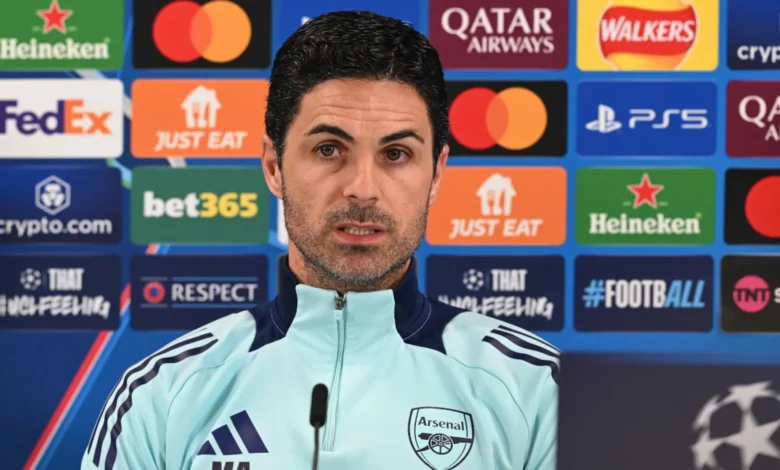Mikel Arteta Reveals the Brutal Truth Behind Arsenal’s Injury Woes

Arsenal boss Mikel Arteta has opened up about the club’s recent struggles with injuries, offering a rare and fascinating insight into what really goes on behind the scenes when players pull up during matches.
Currently arsenal are missing:
| Player | Injury Type | Expected Return Date |
| Gabriel Fernando de Jesus | Knee Injury | 03/01/2026 |
| Kai Havertz | Knee Injury | 23/11/2025 |
| Chukwunonso Madueke | Knee Injury | 23/11/2025 |
| Piero Hincapie Reyna | Groin/Hip/Pelvic Injury | 18/10/2025 |
| Martin Ødegaard | Knee Injury | No Return Date (Currently Being Assessed) |
| Declan Rice | Lower Back Injury | No Return Date (Currently Being Assessed) |
Speaking candidly, Arteta revealed that several of Arsenal’s recent injuries particularly muscular ones stemmed from almost identical in-game situations that are nearly impossible to recreate in training.
“We had three very similar actions with three injuries, two groins and one hamstring,” Arteta explained. “There is a push when people are trying to accelerate, so to replicate that in training is very difficult.”
The Spaniard went on to break down one example involving Brazilian defender Gabriel Magalhães, who suffered a hamstring issue while tracking back against one of the league’s quickest players.
“Gabriel Magalhaes, for example, when he injured his hamstring, he had to track 50m backwards and the one he was chasing was Adama Traore,” said Arteta. “If instead it was Emile [Smith Rowe], with all respect, probably he doesn’t pull his hamstring because the last time he went to 34KPH was six weeks ago. So, he didn’t have any exposure there.”
Arteta’s point highlights just how unpredictable football injuries can be. Even with top-tier sports science, fitness tracking, and recovery protocols, certain match conditions like sprinting full tilt to chase a lightning-fast opponent can’t always be replicated in a controlled environment.
“Can I train that? I don’t think I can,” Arteta admitted. “Maybe before that he had to do two very explosive actions, or maybe none and that’s the moment where the muscle/tendon reacts or not.”
It’s a brutally honest reflection from a manager known for his meticulous attention to detail. While Arsenal’s injury management team continues to monitor workloads and optimize recovery, Arteta’s words underline a reality that even the most prepared clubs can’t fully escape, football’s split-second bursts of intensity can make or break a player’s fitness in an instant.
As the Gunners push forward in their campaign, staying healthy may prove just as crucial as tactical brilliance and Arteta seems well aware of the fine line his squad must tread.
